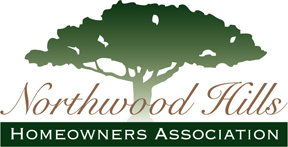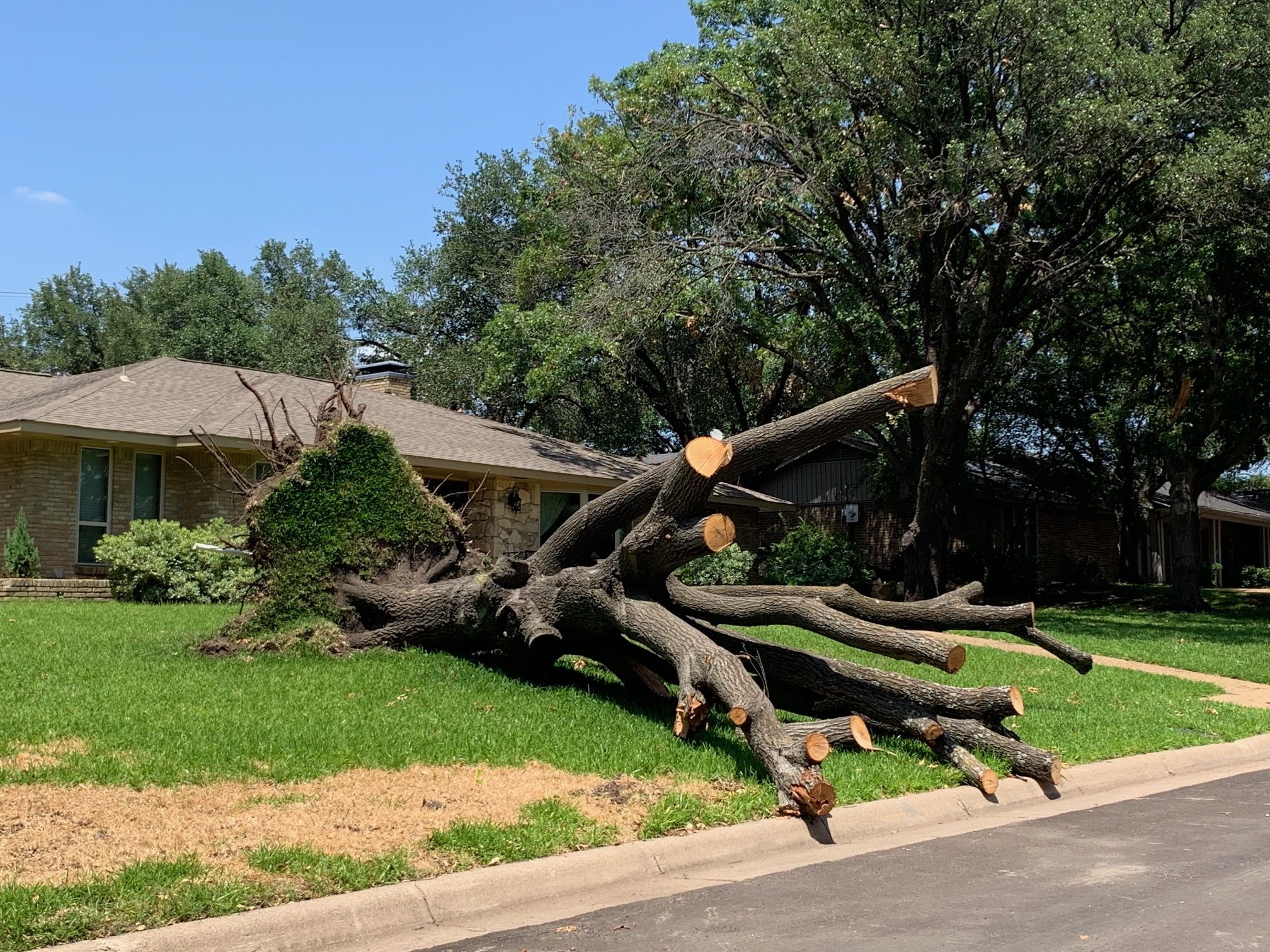Because it seemed many Northwood Hills residents lost entire trees or major sections of trees, NHHA member Amy Schellhorn spearheaded a project to gather data about the losses experienced. She wanted to find out if some species of trees were more likely to uproot or lose large branches and which ones fared the best. NHHA members were invited to participate in a survey to share details about the damage they experienced and the trees that stayed strong.
Seventy-five households were represented in the survey and of those, twenty-two reported uprooted trees. Oaks (unspecified) made up the majority of trees lost, with crepe myrtles coming in second. Almost 80% of respondents reported the loss of large limbs (greater than 1 foot in diameter). Red Oaks, Live Oaks, and Cedar Elms were the biggest offenders in this category. Some households reported minimal to no damage on some of their trees, with most mentioning Live Oaks and Crepe Myrtles in their responses. Respondents attributed regular pruning and the specific location of the tree (i.e. if it was shielded from high winds by a house or other tree) as the reason for minimized damage. The full data, along with recommendations, is shown below:
1) Were any trees in your yard completely uprooted in the storm?
53 households had no trees uprooted.
22 households had trees uprooted.
Here are the species of the uprooted trees:
9 – Oak (not specified)
6 – Crape Myrtle
3 – Live Oak
3 – Elm
3 – Red Oak
3 – Mexican Plums
1 – Red Cedar
2 – Hackberry
1 – Yaupon Holly
1 – Fig
1 – Cottonwood
1 – White Oak (Bur Oak, etc.)
1 – Unknown
2) Did any of your trees experience the loss of very large limbs (greater than 1 foot in diameter)?
18 households experienced no loss of large limbs.
57 households experienced large limb loss in 98 trees.
Here are the species of trees with large limb loss:
14 – Unknown
14 – Red Oak
13 – Cedar Elm
11 – Live Oak
9 – Oak (not specified)
8 – Pecan
7 – Hackberry
4 – Crape Myrtle
3 – Red Cedar
2 – Yaupon Holly, Sweet Gum
1 – Texas Oak, Elm, Magnolia, Post Oak, Bois d’Arc,
Cottonwood, Fig, Bur Oak, Ash, American Elm, Cypress
3) Did any of your trees experience the loss of smaller limbs?
2 households experienced no loss of small limbs.
73 households experienced the loss of small limbs.
Here are the species of trees with small limb loss:
32 – Live Oak
25 – Red Oak
18 – Cedar Elm
13 – Oak (unspecified)
8 – Pecan
7 – Hackberry
5 – Crape Myrtle
4 – Bois d’Arc, Magnolia, Japanese Maple
3 – Ash, unknown, Desert Willow, Cottonwood
2 – Red Cedar, Yaupon Holly, Sweet Gum, Maple, Wax
Myrtle, Dogwood, Cypress, Sycamore
1 – Pine, Vitex, Dutch Elm, Post Oak, Chinese Elm, Texas
Mountain Laurel, Lace Bark Elm, Red Bud, Chitalpa,
Yew, American Elm
4) Did you have trees that experienced no damage, outside of small branches and leaves?
8 households experienced minimal damage.
67 households experienced more damage.
Here are the species of trees that experienced minimal damage
47 – Live Oak
20 – Crape Myrtle
18 – Oak (unspecified)
15 – Red Oak
13 – Magnolia
7 – Japanese Maple
6 – Yaupon Holly
4 – Pecan
3 – Elm, Chinese Pistache
2 – Red Bud, Vitex, Bradford Pear
1 – Lacebark Elms, Fig, Sweet Gum, Pine, Hackberry,
Mulberry, Dogwood, Aristocrat Pear, Cedar Elm, White
Bud, Wax Myrtle
5) Observations/comments from respondents:
Seven people commented that they believed the regular pruning seemed to have helped minimize damage in their trees. In a few cases, people commented that their tree that was severely damaged was sick and in a weakened condition. One person commented that pecan trees are brittle, and was grateful there were no injuries; others commented how sad it is for the neighborhood to have sustained so much damage.
There were several comments on how well the city completed the cleanup, along with advice to stack the debris high and away from the mailbox. Another person noted that trees that received direct impact from the wind were the most damaged. The trees that were somewhat shielded, either by other trees or the house, did not suffer damage. Multi-trunked trees often sustained more damage in these winds.
Amy visited with arborist Alan Johnson of Holcomb Trees to get advice for Northwood Hills’ residents. Alan recommends pruning trees every 2 years, or 3 years in cases of drought when trees aren’t growing as much. In his observations, he noted Cedar Elms and Pecans sustaining the most damage, with the largest Red Oaks more likely to be uprooted. If you’re looking to plant this Fall (the best time to do so), Alan recommends White Oaks, like a Bur Oak or a Chinkapin Oak. They are less susceptible to oak wilt than Red Oaks or Live Oaks. If you’re looking for a faster growing tree, consider Cedar Elm, Sweet Gum, or Texas Ash, but be warned they have softer wood and would be more susceptible to wind damage.
Even though Oak trees experienced significant damage from this unusual storm, it’s important to remember they are typically strong trees with a 200 – 300 year life span. Pecan trees can also live for hundreds of years, but they are known to be more brittle and are “self-pruning.” The magnificent trees in Northwood Hills add value to our properties and enrich our neighborhood, so if you were left with a large void after the storm, consider Alan’s advice, visit a tree farm, and also be on the lookout for a City of Dallas tree giveaway program this fall. Thanks to the survey respondents, our researcher Amy Schellhorn, and arborist Alan Johnson for their contributions to this project.

